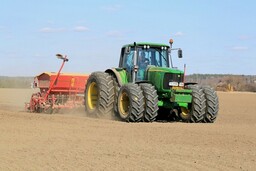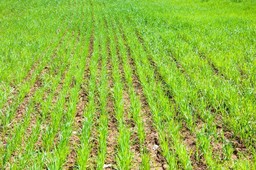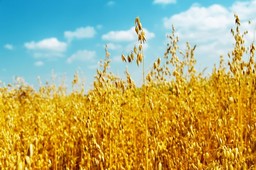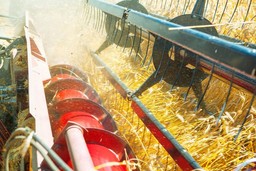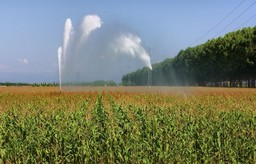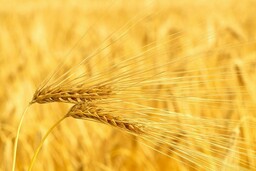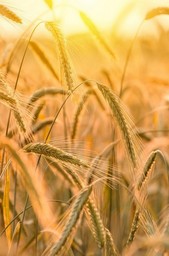7. Food production
Contents
7.1 Food production
 The amount and feasibility of agricultural production varies between different regions of the planet. Agriculture is impossible in the coldest regions of the Earth, such as Greenland, Antarctica and the Spitsbergen. Dry deserts and steep mountain ranges are likewise unsuitable for agriculture. The most suitable areas for agriculture provide enough warmth and precipitation for plant growth, and have a fertile soil type.
The amount and feasibility of agricultural production varies between different regions of the planet. Agriculture is impossible in the coldest regions of the Earth, such as Greenland, Antarctica and the Spitsbergen. Dry deserts and steep mountain ranges are likewise unsuitable for agriculture. The most suitable areas for agriculture provide enough warmth and precipitation for plant growth, and have a fertile soil type.
The monsoon climate region in Asia is perfectly suited for rice farming. The most productive areas produce over ten tons of rice per hectare every year.
The temperate grassland regions of the temperate zone are likewise well-suited for agriculture. The relatively flat and treeless areas are easy to convert for agricultural use, and the fertile soil type is perfect for farming crops such as corn and wheat. By using artificial irrigation methods, the yield from these kinds of areas can often surpass that of the Asian rice fields.
Agriculture in the European and North American broadleaf forest zone takes the form of mixed agriculture, where the same farms focus on both raising livestock and growing crops. The soil type is well-suited for agriculture, and the amount of rainfall is likewise sufficient. However, agricultural production in these areas also relies greatly on mechanization and fertilization. Greenhouses are also common in these regions.
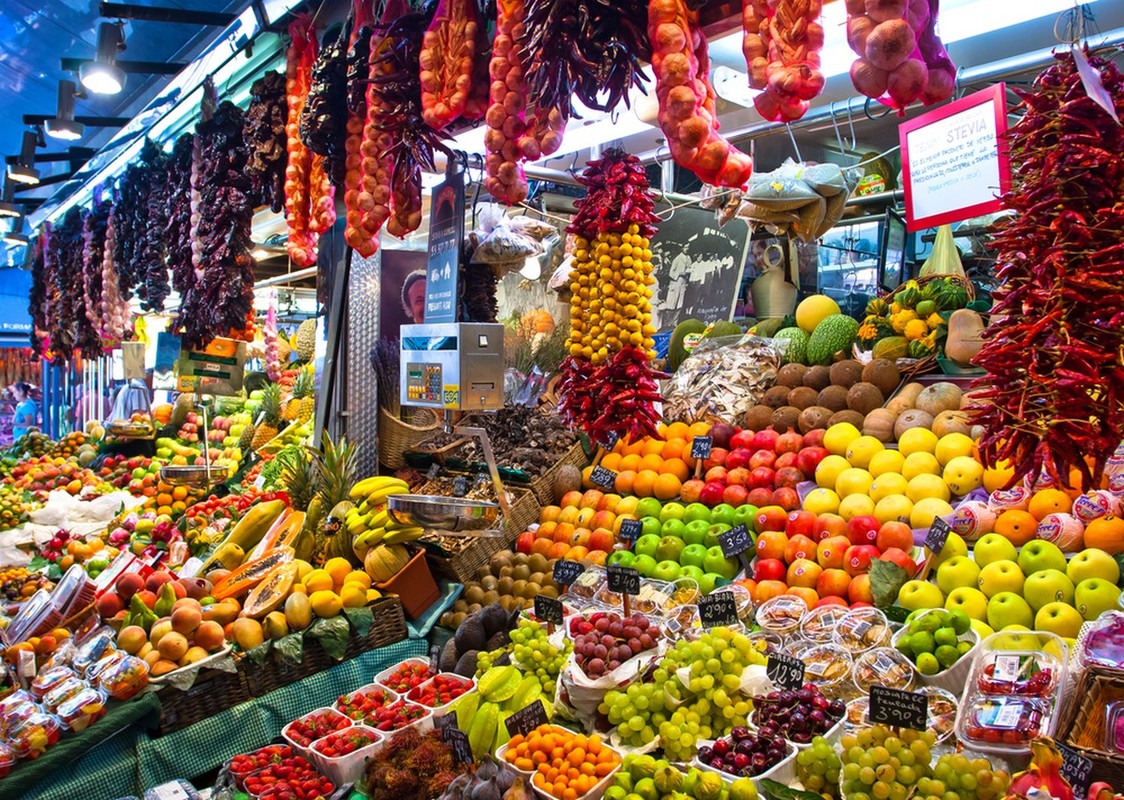
The Mediterranean produces a lot of citrus fruits. Barcelona, Spain.
In the Mediterranean climate region, agricultural production is concentrated on fruits, such as oranges and lemons, grapes and olives. In addition, the long summers and rainy winters of the Mediterranean climate provide perfect conditions for growing different vegetables.
| Nation | Value of exports, billion USD |
|---|---|
| United States | 147 000 000 (e.g. corn, wheat, soy, and cotton) |
| Netherlands | 90 000 000 (cereals, fruits, vegetables, meats, flowers) |
| Germany | 84 000 000 (cereals, meats) |
| Brazil | 75 000 000 (beef, soy, corn, cocoa, tobacco) |
The significance of tropical rainforest regions for the planet's agriculture has grown significantly during the last couple of decades. Rainforests have been cleared to make room for the farming of products such as cane sugar, soy, palm oil and beef. The climatic conditions of the regions make agricultural production effective, but the larger production also causes significant environmental problems.
There are areas in inland Asia and Africa where drought, rocky soil and mountainous terrain prevent efficient agricultural production. In these areas, people rely on animals such as goats and sheep for their livelihoods.
The production of potatoes.
7.2 Cereals
Corn, rice and wheat are the most important food plants in the world, when looking at the total amount produced and the monetary value of their production. Other important food plants include sorghum, millet, sugar cane and many grasses and legumes.
Corn is grown in large fields in regions that range from the tropical zone to the temperate zone. Corn production has grown significantly during the last couple of decades. The most important corn-farming regions are the prairies of the United States and China.
Corn is a very productive food crop. Most of the corn produced in the world is used as food for livestock. Corn is also used to make corn syrup and ethanol.

Corn farming in Italy.
The monsoon climate regions of South and East Asia are the among the most densely populated areas on the planet. The same regions are also the primary producers of rice in the world. Rice feeds the largest amount of people on the planet, forming the basis of the Asian diet.
Rice is a swamp grass that is grown in partially submerged fields. That is why rice farming is a perfect livelihood in the monsoon climate region, which receives a large amount of rainfall each year.

Rice farming requires a lot of warmth and rain. Harvesting it also requires a lot of human labor.
Wheat is the most common cereal on the planet. It is used to produce a variety of products, including bread flour, semolina, bran, flakes and couscous. Wheat flour is the main ingredient in white bread. Different kinds of pasta (such as macaroni and spaghetti) are also made from wheat flour.
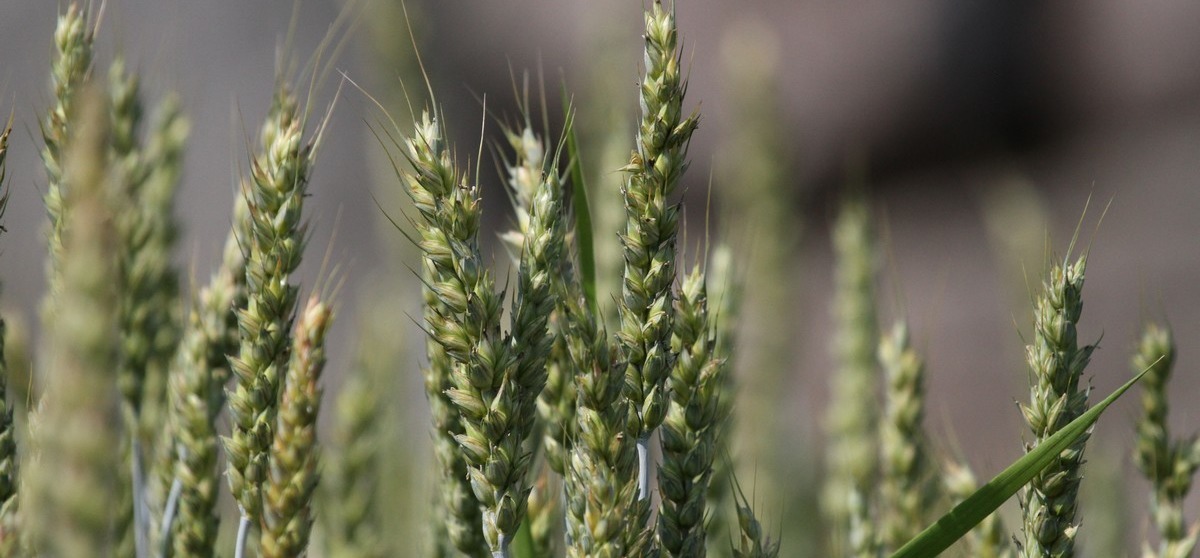
Wheat is the most significant cultivated plant on the planet.
Sugar cane is grown in the tropical and subtropical zones. The largest producers of cane sugar are Brazil, China and India.
Like other globally significant cultivated plants, sugar cane is primarily grown in large plantations. A large part of the yield is refined into sugar and ethanol.
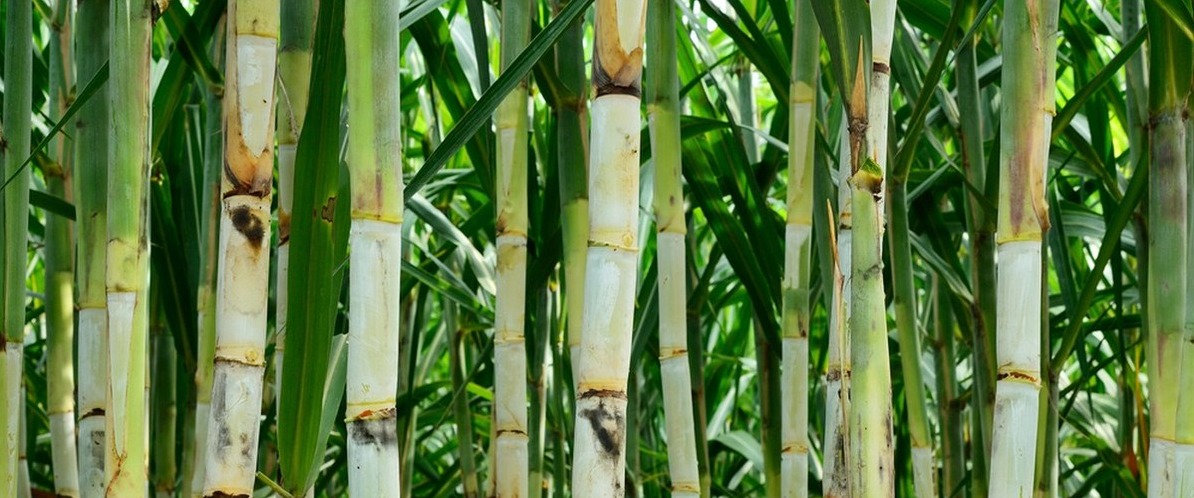
Sugar cane is used to produce sugar.
Soy is a legume that thrives in warm climates. In recent years, the global soy production has increased significantly due to it being used as food for livestock. Soy is notable for its high protein concentration. It is also used to make various human foods, such as tofu.
When the productivity of a cultivated plant is measured in yield per hectare, the most productive plants are tuberous root plants. An example of such a plant is potato, which can yield over 30 tons per hectare. Sweet potato and manioc are tuberous plants that are widely grown in the tropical and subtropical zones.

A potato field. Tubers are planted in the soil during the spring. The tubers grow into plants that produce more tubers.
7.3 Gallery: Cereals
7.4 Gallery: Food crops
7.5 Animals and food production
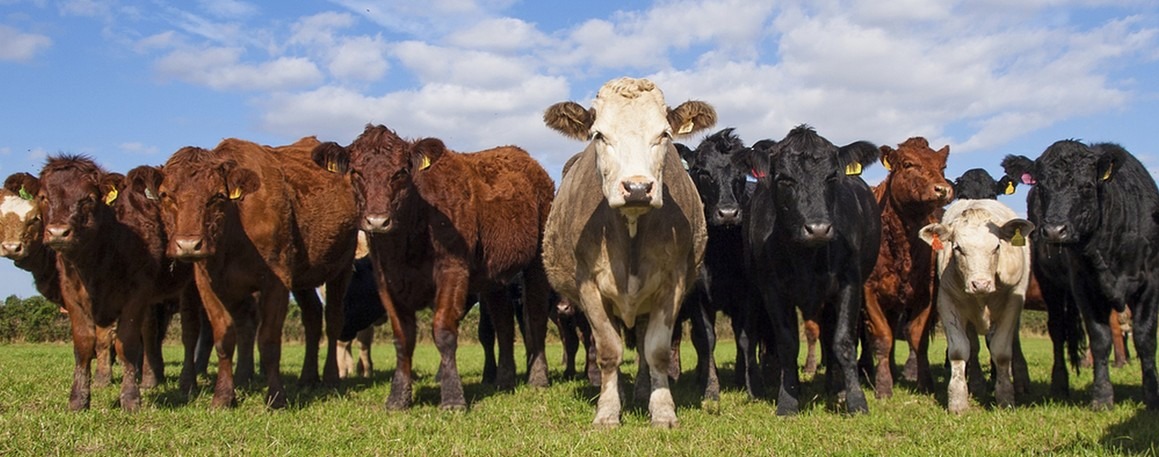
Cattle is grown for its meat and milk.
Most people on the planet use animal products as food. These animal products include meat, fish, milk, eggs and shellfish. Some of these products are gathered from the wild through hunting and fishing, but the majority is produced through farming.
Livestock consume large amounts of cultivated crops. For example, most of the world's corn production ends up as food for farm animals.
The most common species of livestock include chickens, cattle, sheep, and pigs. China, Brazil, India and the United States are the most significant nations in terms of livestock production. Australia and New Zealand are among the most important producers of sheep products.

Australia is one of the most significant producers of sheep products.
The use of animals as food is subject to many ethical questions. As a result, different religions have different restrictions when it comes to using animals as food. In Islam, for example, eating pork is prohibited completely. In some religions, such as Islam and Judaism, the animal must also be slaughtered in a specific way for it to be suitable to for human consumption. Members of some Buddhist and Hindu sects do not meat at all.
One of the fastest growing forms of food productions is tank farming. In tank farming, animals and plants are farmed in water tanks, often in the sea. This method is used to farm fish, shellfish and seaweed.
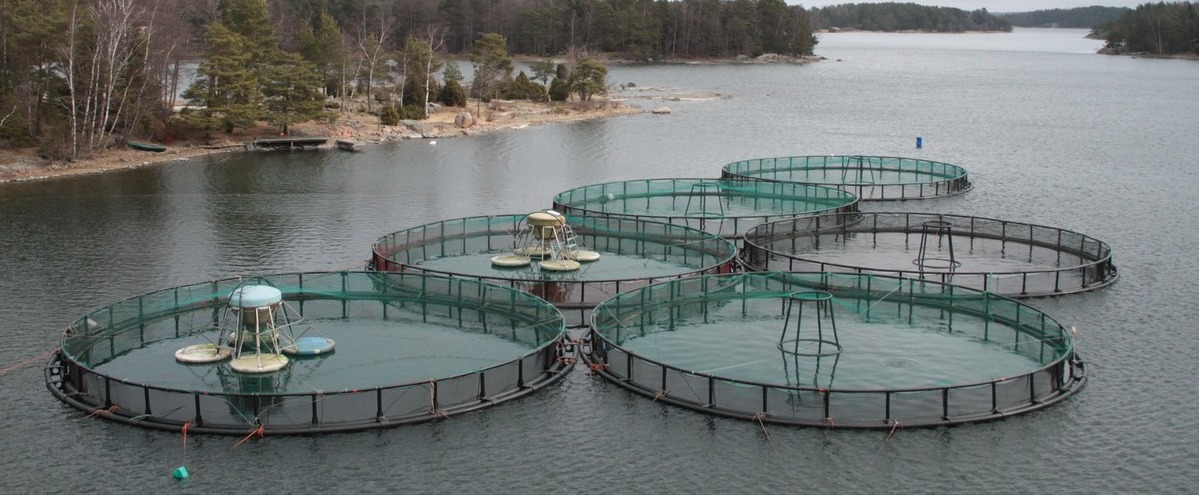
Tank farming is a rapidly growing method of food production. Fish farming in Nauvo, Finland.
7.6 Other agricultural products
Most of the world's agricultural production is used to produce food. However, throughout human history, different plants have also been grown for other uses. These uses include the production of stimulants, fabrics and fuels.
Cotton is a fibre that is used in the production of fabrics. It comes from a plant that is grown especially in China, the United States, Australia and India. Other plant-based fabrics include linen, which is made from flax, and hemp.
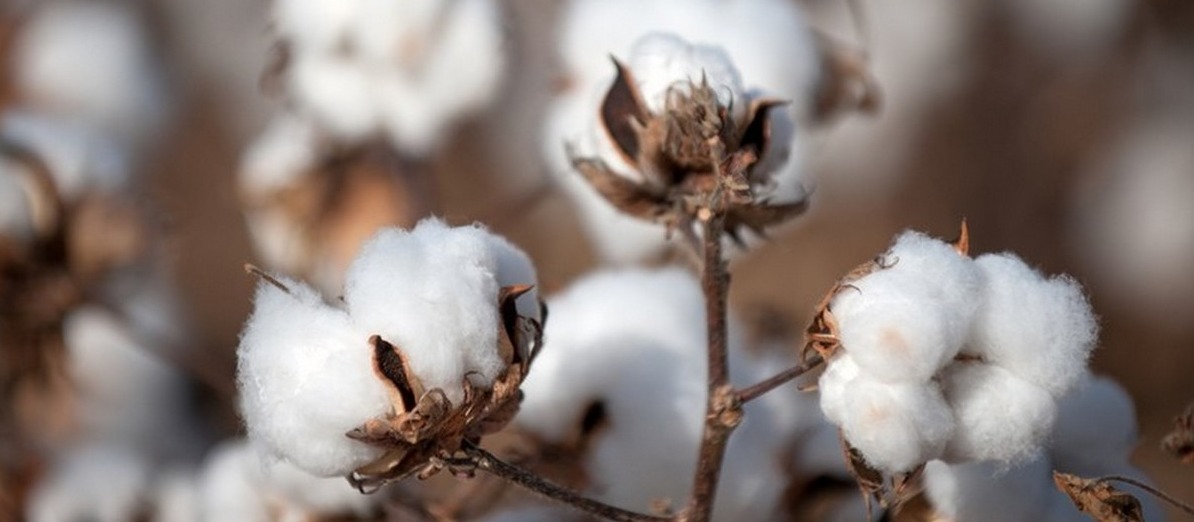
Cotton is an important plant that used in clothing and fabrics.
Although the consumption of tobacco has decreased significantly in many countries, millions of tons of it are still produced every year. The most important tobacco producers in the world include China and India, which are also the two most significant tobacco consumers on the planet.
Coffee, cocoa and tea are important stimulants for global trade. Cocoa is a tropical tree that is grown especially in Brazil and Western Africa. Coffee is a shrub plant that grows in tropical mountain regions. Brazil, Columbia and Vietnam are the most significant coffee producers in the world.
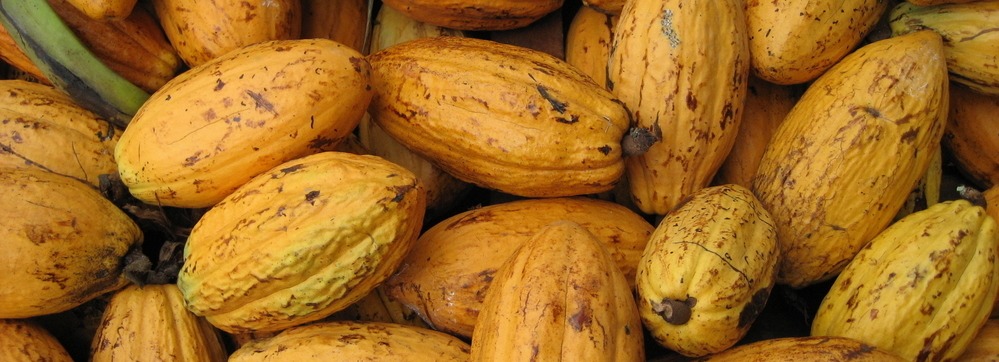
Cacao is grown in tropical forests.
The limited availability and environmental sustainability of fossil fuels has increased the popularity of different biofuels. Ethanol is made from sugar cane or corn, and is used as an alternative for benzine. Biodiesel is a fuel that is made from the leaves of oil palm trees.
The advantage of biofuels is that they can potentially become carbon neutral. This is because the growing trees can use up the same amount of carbon dioxide that is emitted into the atmosphere when the fuels is used. However, as many biofuels are produced in regions where their production harms the local environment significantly, there is still a demand for more efficient and environmentally friendly methods of fuel production.

The tropical oil palm is used to make biofuels.
7.7 The problems of food production
| Year | Field area (ha/person) | Grain production (kg/ha) |
|---|---|---|
| 1960 | 0,37 | 1 400 kg |
| 1985 | 0,25 | 2 700 kg |
| 2010 | 0,2 | 3 900 kg |
| Valtio | chicken | pork | beef | mutton | total |
|---|---|---|---|---|---|
| United States | 50 kg | 23 kg | 26 kg | 0,5 kg | 99 kg |
| Finland | 27 kg | 33 kg | 20 kg | 0,7 kg | 78 kg |
| Ethiopia | 0,1 kg | 0 kg | 2,6 kg | 0,5 kg | 3,2 kg |
| China | 12 kg | 30 kg | 4 kg | 3 kg | 49 kg |
| India | 2,4 kg | 0,2 kg | 0,5 kg | 0,5 kg | 3,6 kg |
Making food production more sustainable will become even more important as the planet's population continues to grow. Earth's population is still growing rapidly, but the amount of land that is suitable for agriculture will not. In fact, many agricultural areas are facing erosion that threatens to make them unsuitable for food production. This will decrease the amount of land suitable for agriculture in the future.
More effective agricultural techniques, mechanization, and more productive food crops have made this development sustainable thus far, but it cannot go on for much longer.
Another problem of food production concerns the distribution of food among the planet's inhabitants. Currently, the agricultural production of the planet surpasses the needs of its population. Despite this, there are over 700 million malnourished people on the planet. This is a result of the uneven distribution of food production.
Summary
- The most significant regions in terms of food production are the rice fields of the monsoon climate region, temperate grasslands, and the tropical regions where crops such as sugar cane and soy are produced.
- A large part of agricultural plant production is used to feed livestock.
- The largest exporters of agricultural products include the United States, the Netherlands, Germany, Brazil, and France.
- Making food production more sustainable is a significant challenge that will become more important as the planet's population continues to grow.
- Key words: cereals, livestock.



